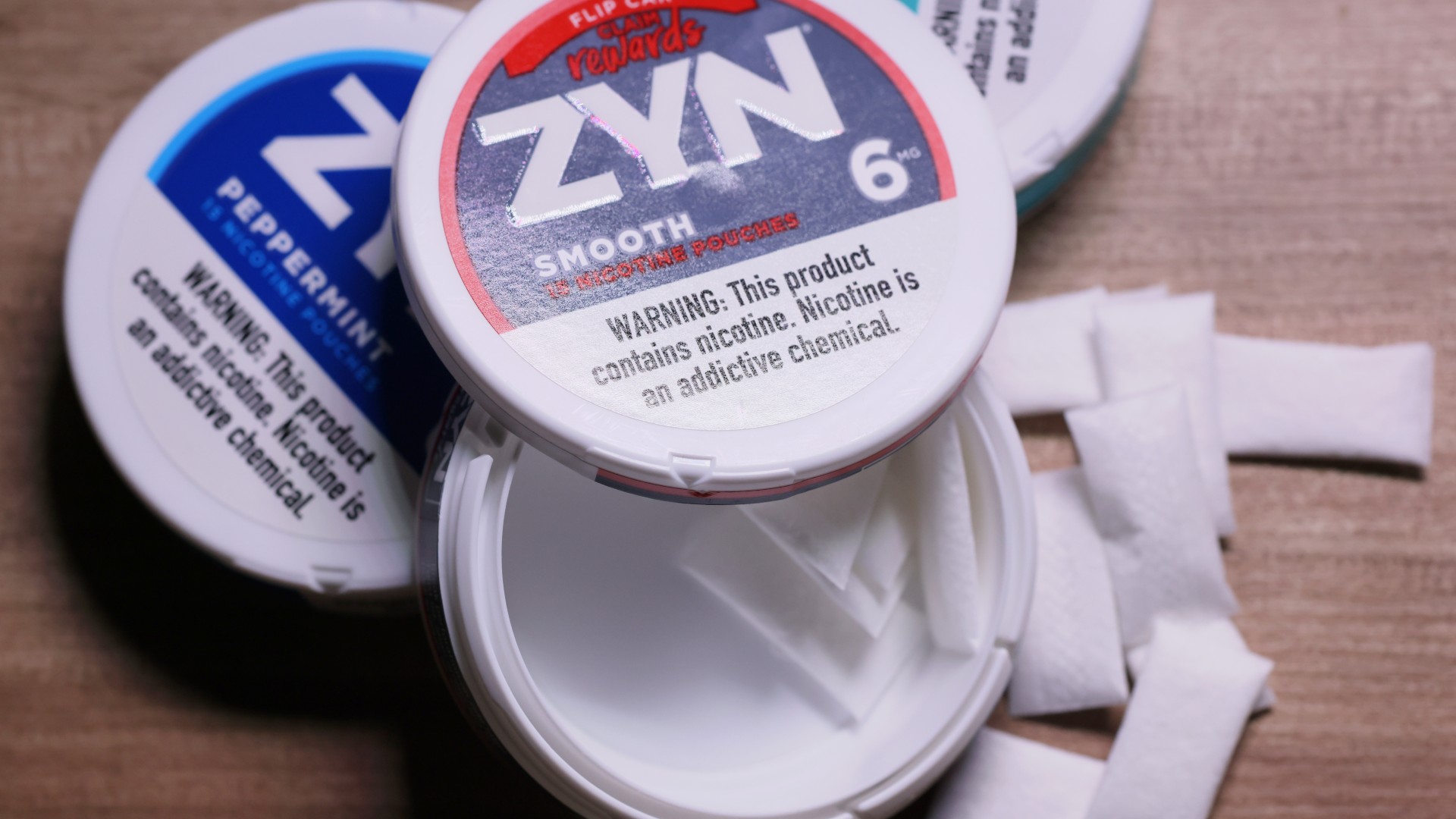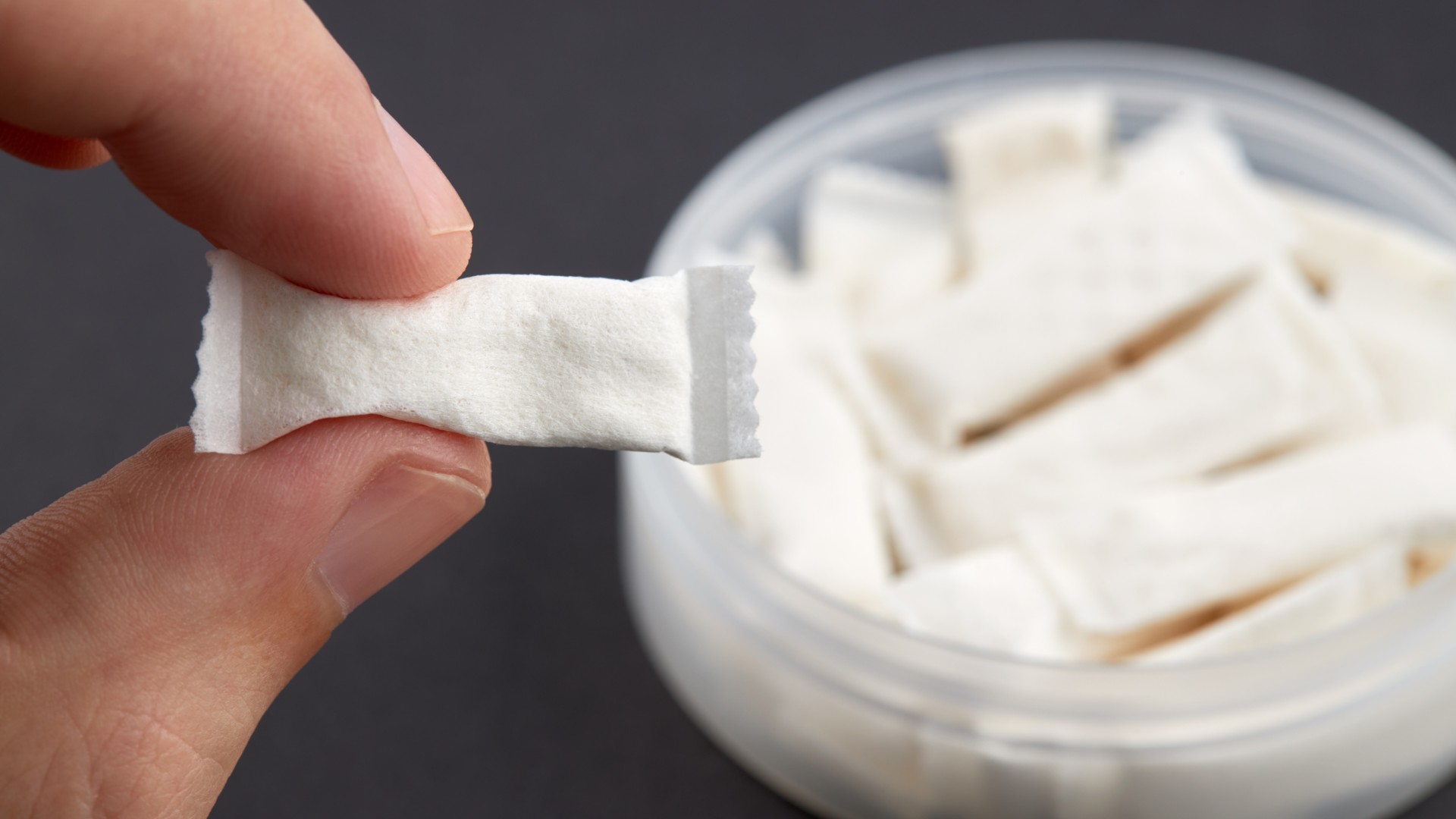What are Zyn nicotine pouches? And are they bad for you?
The FDA has given marketing authorization to Zyn nicotine pouches. That doesn't necessarily mean they're safe to use, especially for young people, and experts say there's little evidence that they help adults quit smoking.

For the first time, the U.S. Food and Drug Administration (FDA) has authorized the marketing of nicotine pouches, synthetic packs of nicotine designed to be placed under a person's lip.
In a statement published Jan. 16, the agency stated that 20 different Zyn nicotine pouch products can now be marketed to adults ages 21 and over. That doesn't mean the pouches are now "FDA approved" as drugs intended to treat disease would be, nor that they are safe. Rather, the pouches have met the FDA's criteria for nicotine-based products that can be sold to the public.
After an "extensive scientific review," the FDA said the pouches have met the public health standard set by the 2009 Family Smoking Prevention and Tobacco Control Act, which weighs the overall risks and benefits that such products would pose to the general population. The agency notes that the pouches contain lower levels of harmful substances than cigarettes do and thus pose a lower risk of cancer and other serious health issues.
However, some public health and medical organizations claim that by authorizing the marketing of these products, the FDA has ignored their warnings about how dangerous the products could be to young people. Meanwhile, other experts have cautioned that there is not yet enough scientific evidence to support their use as a smoking cessation tool. The FDA's statement suggests that the pouches could be helpful in the event that people who smoke completely switch to the pouches instead.
Here's everything we know so far about nicotine pouches and the new FDA authorization.
Related: Simple vaping 'quitline' can help over 40% of young people quit, study finds
What does the FDA authorization mean?
The new FDA authorization means that 10 flavors of Zyn nicotine pouches can now be legally marketed in the U.S. to adults ages 21 and over. These 10 flavors come in two nicotine doses: 3 and 6 milligrams. The company markets these flavors as chill, cinnamon, citrus, coffee, cool mint, menthol, peppermint, smooth, spearmint and wintergreen.
Sign up for the Live Science daily newsletter now
Get the world’s most fascinating discoveries delivered straight to your inbox.
In its Jan. 16 statement, the FDA notes that this latest authorization does not mean that these products are safe for use or that they are "approved" by the agency. This is as opposed to several types of nicotine-replacement therapies, including "nicotine gum" and "nicotine patches," which have been approved by the FDA as quit-smoking aids. These latter products have been shown are much less addictive than cigarettes, don't cause death or disease and are usually only used temporarily.
Products like Zyn don't need to be proven safe and effective for a specific population — the manufacturer just needs to comply with "requirements under the law to bring its product to market," the FDA website says. In addition, the FDA assesses whether a given product would offer more benefits than risks to the general population, considering the population as a whole, including users and nonusers of tobacco products. It weighs, for example, whether people who currently smoke might benefit from switching to the new product, or if nonusers might be likely to start using nicotine for the first time once the new product hits the market.

What are nicotine pouches?
Nicotine pouches like Zyn are small, rectangular bags of powder that are placed between a person's lip and gums to deliver nicotine. They don't contain any of the tobacco found in conventional smoking products, such as cigarettes and cigars. Nicotine from the pouches enters the bloodstream and makes its way to the brain via the oral mucosa — the wet, soft tissues that line the mouth.
"Nicotine pouches are a relatively new category of tobacco products that are unique because they contain a crystallized nicotine powder instead of tobacco leaf," Tory Spindle, an associate professor of psychiatry and behavioral sciences at Johns Hopkins Medicine, told Live Science in an email.
"This means that they generally contain fewer harmful ingredients compared to traditional tobacco products," he said. Products like cigarettes contain both tobacco and a variety of additives, both of which contain carcinogens.
But nicotine pouches aren't free of harmful chemicals. "They do still contain nicotine which is an addictive substance as well as other substances such as flavorants," Spindle said. A study published in the journal Tobacco Control in 2022 found that 26 of 44 sampled nicotine pouch products contained cancer-causing chemicals known as tobacco-specific nitrosamines. The nicotine in the pouches can be derived from tobacco plant extracts, explaining how these chemicals end up in the products.
The same study also found that each of the sampled pouches contained between 1.79 and 47.5 mg of nicotine. By comparison, cigarettes contain an estimated 6.17 to 12.65 mg and e-cigarettes release about 0.5 to 15.4 mg per 300 puffs, while nicotine patches or gum release up to 21 mg or 4 mg of nicotine. So, depending on the brand, nicotine pouches still deliver substantial amounts of nicotine compared with other products on the market.
Can nicotine pouches help people quit smoking?
For a product to receive marketing authorization, there needs to be sufficient evidence that it offers greater benefits than risks to the health of the general population, Matthew Farrelly, director of the Office of Science in the FDA's Center for Tobacco Products, said in the agency's Jan. 16 statement.
"In this case, the data show that these nicotine pouch products meet that bar by benefiting adults who use cigarettes and/or smokeless tobacco products and completely switch to these products," Farrelly said.
However, experts are unconvinced that there is enough scientific evidence to support the idea that adult smokers will actually make the switch.
Related: Nicotine vapes are one of the best tools to help people quit smoking, review of 300 trials suggests

"There are some anecdotal reports of people switching from smoking or using traditional oral tobacco products such as 'dip' or 'chew' to nicotine pouches," Spindle said. "But the gold standard research studies needed to answer this question (randomized controlled trials) have not been done."
Randomized controlled trials allow scientists to directly assess whether one factor causes another. In this case, such a trial would likely involve a large group of people who currently smoke, a percentage of whom would be given nicotine pouches to see whether they're more likely to quit than people given a different intervention or nothing at all.
One recent scientific review, published in 2024 in the journal Experimental and Clinical Psychopharmacology, suggested that oral nicotine pouches may be a "viable harm reduction" option for people who switch over completely from conventional tobacco products. However, that review also concluded that randomized controlled trials are needed to determine if people will continue to use the pouches in the long term. More independent research on the topic, not funded by the tobacco industry, is also needed, the review states.
What are the potential risks of using nicotine pouches?
Nicotine pouch use is associated with several health effects, including addiction to the nicotine within them, Spindle said. These effects can be particularly pronounced for younger people, who may still use the products despite the new authorization only allowing marketing towards over-21s.
"Developing an addiction to a substance can have negative impacts on the developing brain, which is why it is important for kids not to use them," Spindle said. Exposure to nicotine during adolescence can alter signaling between neurons in the prefrontal cortex of the brain. This part of the brain controls an array of cognitive functions, including decision-making and reasoning, and it's one of the last regions of the brain to mature.
Nicotine pouches are also known to cause side effects, such as nausea and mouth sores. Because they don't include all of the harmful substances found in traditional tobacco products, some people might assume that the pouches have fewer long-term health effects. However, that's not known for sure, and their impact on oral health is particularly unclear, Spindle said.
The FDA says it will "closely monitor the marketing and use of these products," according to the Jan. 16 statement. This monitoring will include ensuring that the marketing of the patches online, on TV and on the radio is targeted to adults ages 21 and over.
But several organizations have raised concerns about whether this level of regulation will be enough to curb the use of nicotine pouches by younger groups. The flavors of authorized Zyn products are likely to appeal to this demographic, the organizations noted.
"While it has not been sold in the U.S. for long, we are already seeing very concerning levels of youth use [of Zyn], and troubling use of influencers and celebrities to promote the product," the American Lung Association said in a statement released Jan. 16.
A 2024 National Youth Tobacco Survey suggested that only 1.8% of middle and high school students in the U.S. use nicotine pouches. However, they were still the second-most commonly used tobacco product after e-cigarettes in this demographic.
Another study, published in the journal JAMA in 2024, found that sales of nicotine pouches in the U.S. had increased by 641% between 2019 and 2022 but that only 2.9% of adults ages 18 and up reported ever using them. This raised questions as to what other groups have been using and raising the demand for these products.
Disclaimer
This article is for informational purposes only and is not meant to offer medical advice.

Emily is a health news writer based in London, United Kingdom. She holds a bachelor's degree in biology from Durham University and a master's degree in clinical and therapeutic neuroscience from Oxford University. She has worked in science communication, medical writing and as a local news reporter while undertaking NCTJ journalism training with News Associates. In 2018, she was named one of MHP Communications' 30 journalists to watch under 30. (emily.cooke@futurenet.com)
NASA's Lucy spacecraft snaps first close-ups of weird peanut-shaped asteroid
Scientists create ultra-tough copper alloy that is stronger than steel and can withstand temperatures of 1500 F
Extreme 'zombie star' capable of ripping human atoms apart is shooting through the Milky Way — and nobody knows where it came from









